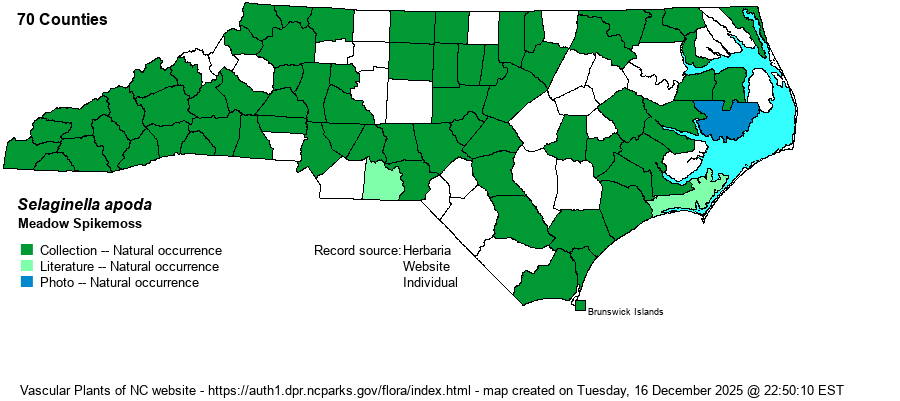| Author | (L.) Fernald | |
| Distribution | Statewide, probably occurring in all counties, though collected from only 2/3rds of them. Unknown from the Outer Banks.
This is an Eastern species, from ME to MO, south to central FL and central TX; also scattered to central Mex. and Guat. | |
| Abundance | Relatively common but very easily overlooked in most areas of the state. Absence of specimens from some far eastern counties might be an artifact of collecting. | |
| Habitat | This is an obligate wetland species, growing in damp to muddy and mostly sunny places -- margins of marshes and ponds, openings in bottomlands, wet meadows and pastures, bogs, open seepages, spray cliffs, mossy forests, and even lawns. | |
| Phenology | Fruits from June to October. | |
| Identification | This is one of the more easily overlooked vascular plants in the state, being very small and resembling a moss or liverwort. It has prostrate stems, often branched, many inches long. The tiny leaves are in 4 rows, with the lateral ones larger, ovate, but barely 1-2 mm (less than 1/10-inch) long, with the upper and lower leaves quite tiny. The leaf texture is quite thin, bright yellow-green to green, growing in mats, though the individual branches and their "2-ranked" leaves are quite distinctive if you bend down to look closely. The strobili are erect and about 1/3-inch long. Technically, this species does not resemble any other vascular plant in the state, but as it is so tiny, most biologists will overlook it completely or simply call it a moss or liverwort and move on. | |
| Taxonomic Comments | Formerly named as Selaginella apoda, and still so in most references. In earlier Weakley floras, it was named as Lycopodioides apodum, but Weakley (2023) has moved it back to the original Selaginella apoda.
| |
| Other Common Name(s) | None | |
| State Rank | S5 | |
| Global Rank | G5 | |
| State Status | | |
| US Status | | |
| USACE-agcp | FACW link |
| USACE-emp | FACW link |

